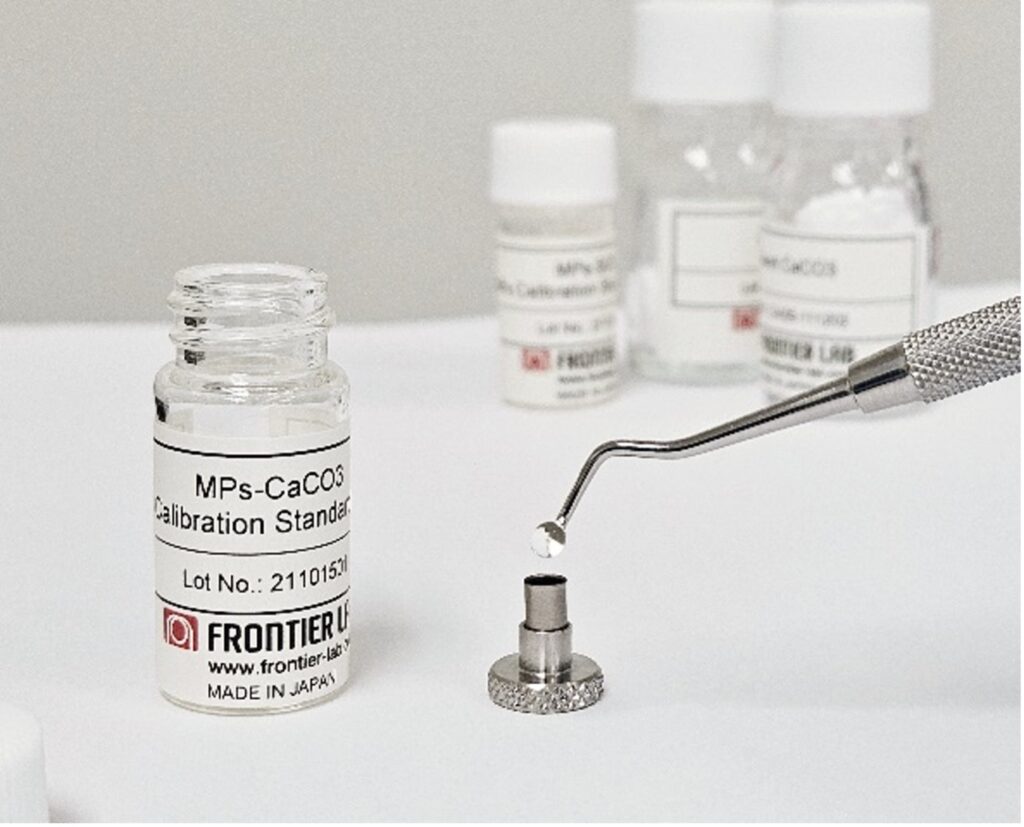
Microplastics analysis with pyrolysis GC/MS is a powerful technique that allows researchers to quantify mass amounts of various polymers in their environmental samples. As we commonly discuss, microplastics research is a rapidly advancing field due to the widespread presence of these contaminants and their potential health risks. Chemists play a crucial role in analyzing microplastics from various environmental matrices like water, soil, and biota. Pyrolysis GC/MS offers a powerful analytical technique for microplastic identification and quantification, making it an invaluable research tool.
Calibration standards play a critical role in quantification and identifying various polymers in an unknown sample. Because of the importance of proper calibration standards, we decided it was worth exploring the Microplastics Calibration Standards Set from Frontier Labs, including what is included in the set and how it helps your microplastics analysis.

The Microplastics Calibration Standard Set from Frontier Lab includes 12 common polymers found in environmental samples. In the environment, these 12 common polymers make their way into microplastics.
Nearly all consumer products are made from polymers. PET is recognizable as water bottles, while polyethylene and polypropylene are used in food packaging, bottles, bins, and plastic bags. Rubbers, like ABS resin and SBR, are used in consumer products ranging from tires to toys. Nylons are made into clothing and ropes, and polystyrene is used in clear cases and foam packaging. PMMA makes a convincing plastic substitute for glass, while epoxies hide as coatings and adhesives in many consumer products. Sturdy polycarbonates and flexible PVC can be used in building materials, and polyurethane can be used in the furnishings of these same buildings.
In reality, each polymer goes beyond this list and finds application in every industry. Nonetheless, the 12 common polymers continue to be in demand, in use, and, consequentially, in the environment.

In each calibrant, all 12 polymers are ground into ultra-fine powder and mixed in with calcium carbonate (CaCO3) or silicon dioxide (SiO2). This process ensures homogeneity, whether you are weighing 4 milligrams (about half the weight of a grain of table salt) of standard or 100 micrograms of standard.
To create a calibration curve, the standards are simply weighed at different amounts.
The calibration comes in two diluents as there are a couple of polymers that have better stability in one matrix over another. For example, Polyurethane is more stable in CaCO3 than in SiO2. However, PET favors SiO2. The user can select the calibrant of their choosing depending on the polymers they are looking for.
The standard kit also comes with extra diluent for users who want to further “dilute” the calibrant.

To prevent powder from scattering as you prepare and load samples, glass wool can be used to top the sample cups. 200 mg (about twice the weight of a business card) of glass wool is included with the microplastics calibration standard sets.
There are two Microplastic Calibration Standard Sets available. The Standard Set contains a few micrograms of each polymer and is ideal for many users looking to quantify microplastics. The Low Set is about 10 times more diluted than the Standard Set and is for users looking to quantify exceptionally low levels of microplastics. Click on each part number to see what is included in each set.
Preparing calibrations is a crucial step in microplastics analysis and research. Ensure your lab is equipped with these standards and other pyrolysis-GC/MS consumables.
Complete this form below to sign up and we will reach out to you with instructions
